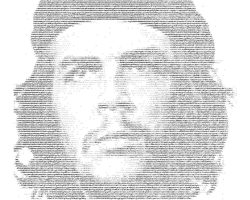
The Walk Down The Aisle: What To Expect
When you’re planning your wedding, there are a million things to think about – the dress, the flowers, the venue, the guest list. But one of the most important things to think about is the walk down the aisle.
This is the moment when all eyes are on you, when you’re making your grand entrance as a bride. So it’s important to make sure you’re feeling confident and ready for your big moment.
Here are a few things to keep in mind as you’re planning your walk down the aisle…
1. The length of your aisle
The first thing to think about is the length of your aisle. If you’re getting married in a church or a large venue, chances are you’ll have a long aisle to walk down. But if you’re getting married in a more intimate setting, your aisle might be shorter.
Either way, it’s important to make sure you’re comfortable with the length of your aisle. If you’re not comfortable walking long distances in your wedding dress, consider a shorter aisle. If you’re worried about tripping on a short aisle, consider a longer one.
2. The width of your aisle
The next thing to think about is the width of your aisle. This is important because you’ll need to know how many people can walk down the aisle with you.
If you’re having a large wedding, you might want to consider a wider aisle so that more people can walk down with you. But if you’re having a smaller, more intimate wedding, a narrower aisle might be more appropriate.
3. The type of flooring
Another thing to think about is the type of flooring you’ll be walking on. This is important because you’ll want to make sure your shoes are appropriate for the type of flooring.
If you’re getting married on a carpeted floor, you’ll want to make sure your shoes are comfortable and won’t slip. If you’re getting married on a hardwood floor, you might want to consider wearing heels so you don’t slip.
4. The lighting
The lighting in your venue is also important to think about. If you’re getting married in a dark church, you might want to consider carrying a bouquet or wearing a veil so you’re not lost in the darkness.
If you’re getting married outdoors, you’ll want to make sure you’re not squinting in the sunlight. If you’re getting married in a dimly lit room, you might want to consider wearing brighter lipstick so you stand out.
5. The music
Last but not least, you’ll want to think about the music you’ll be walking down the aisle to. This is important because you want to make sure the music fits the tone of your wedding.
If you’re having a traditional wedding, you might want to consider walking down the aisle to classical music. If you’re having a more modern wedding, you might want to consider walking down the aisle to pop music.
Whatever you decide, make sure you’re comfortable with the music and that it fits the overall tone of your wedding.

